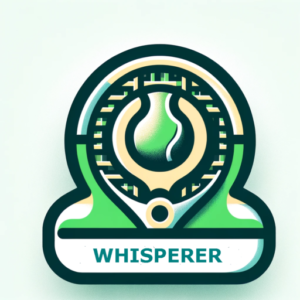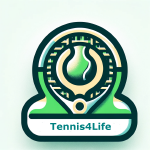Breaking the Injury Cycle: Anisimova
Breaking the Injury Cycle: Anisimova
Amanda Anisimova knows what it feels like to carry expectations. At just 17, she reached the French Open semifinal and was hailed as the next American star. But soon after, her world turned upside down when her father and coach died unexpectedly at 52. Her motivation faded, and injuries began to take over her career.
Last night, she reached her first Wimbledon final after beating world No.1 Sabalenka 6-4, 3-6, 7-5. Behind this result is not just her talent but the work of her physio, Shadi Soleymani, who Anisimova credits with a key role in turning things around.
Who is Soleymani?
Soleymani grew up in Sweden, played college tennis in Canada and the US, and trained as a chiropractor with a focus on biomechanics. Before joining Anisimova, she worked with Zheng Qinwen who made a Grand Slam final and won Olympic gold.
Breaking the Cycle of Injury
When Soleymani started working with Anisimova, she noticed something crucial. Amanda was stuck in a loop many athletes know too well:
-
Ongoing pain stopped her from training properly
-
Rest led to loss of fitness and conditioning
-
Competing without preparation caused reinjury
Soleymani assessed her body thoroughly and found weaknesses down her left side, which takes most of the load from serving and backhands. There was scar tissue and muscle imbalance that no one had properly addressed.
“Most of the fitness work she was doing was just putting muscle on top of damaged tissue, covering up problems rather than fixing them,” Soleymani explained.
She used targeted massage and therapy to break down scar tissue, then introduced flexibility and strength work to build stability from within. This wasn’t about quick fixes. It was about giving Amanda a solid base so her body could handle the demands of professional tennis again.
Soon, Amanda went from only being able to practice 50 minutes before pain set in to training up to 3 hours pain-free. This gave her the confidence to trust her body again and train the way she needed to perform at her best.
More Than Just Physical Treatment
Soleymani’s support went far beyond injury treatment:
-
She noticed Amanda was drinking too much coffee and not enough water, which was affecting her sleep. Cutting out coffee after 6 pm improved her recovery.
-
While Amanda’s vegan diet was healthy, Soleymani encouraged her to add more dark vegetables and proteins like fish or chicken to maintain her energy for long practices.
-
She adjusted training loads around Amanda’s menstrual cycle to optimise strength and recovery.
Each morning, Soleymani assessed her and worked with her strength and tennis coaches to plan the day’s sessions based on what her body could handle.
The Evolving Role of Physios
Today, physios on tour do far more than treat injuries:
-
They help players move efficiently and reduce the risk of injury
-
They integrate with strength and tennis coaches to build effective, realistic training plans
-
They provide daily support in what is often an intense and isolating sport.
My Own Story
Physios and massage therapists are also a key part of my Tennis 4 Life program. I make regular visits to see Dave and Nerrisa at Trident in Brookvale. They’ve been instrumental in keeping this old dog on court for the past 15 years. Before that, when we lived in California and competed in the US Nationals – on hard courts, no less, which are really tough on the body – it was Ken and Wilma at the Palisades Tennis Club who kept me going.
Wrap: What This Means for You
You don’t need to be aiming for Wimbledon to benefit from a sports-trained physio or massage therapist.
Whether you’re competing in Badge, playing social doubles, or simply wanting to keep your body moving well into your later years, having someone skilled to treat niggles before they become injuries, improve your movement, and keep you pain-free is invaluable.
Regular treatment can help you:
-
Release tight muscles before they turn into injuries
-
Improve mobility and balance to move better on court
-
Recover faster after matches or training so you stay fresher
-
Identify small weaknesses before they develop into long-term problems
Too often, players are told that with rest, injuries like tennis elbow will heal themselves. But rest alone rarely fixes the underlying cause. Without proper treatment and guided rehab, pain often returns as soon as you pick up your racket again.
Investing in a good physio or massage therapist is one of the smartest decisions you can make for your tennis life.



